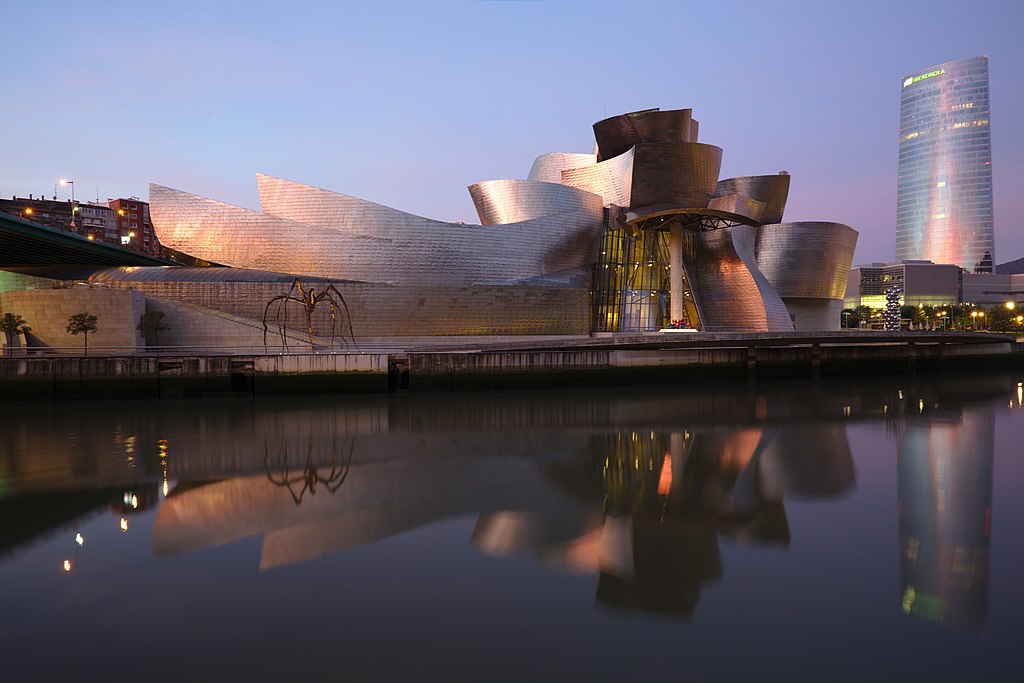At the heart of Bilbao’s transformation from an industrial center to a world-renowned tourist destination sits the Guggenheim Museum Bilbao. While today, one cannot think of the city without envisioning the museum, there was significant resistance to the construction at the time. Now, other cities try to reproduce the so-called “Bilbao Effect” or “Guggenheim Effect,” with contrasting results.

- Before the museum, Bilbao was still coping with its industrial past. The Nervión river (or Ibaizabal river, depending on perspective), running through the city past where the Guggenheim now stands, was highly polluted. The last 16 miles of the river were an ecological dead zone and it was considered one of the most highly polluted rivers in the world. However, beginning in 1990, efforts began to heal the river and today it is full of aquatic life.
- In the process of transitioning from an industrial to a service-based economy, Bilbao made an agreement with the Guggenheim Foundation in New York to host the museum. In 1991, a competition was held for its design, which was won by Frank Gehry. His design, in the so-called deconstructivism style, featured two particularly unique elements: long curved forms that were challenging from a practical use perspective, and the titanium sheets (33,000 of them, made in Pittsburgh) that cover the surface. He not only won the design, but he ultimately picked the location for the museum, as it had not yet been decided at the time of the competition.
- The Guggenheim was just one part in a complete transformation of the city. Other buildings followed, including the Euskalduna Conference Centre and Concert Hall, Zubizuri, and the Metro Bilbao.
- The Guggenheim, or Bilbao, Effect refers to the impact the museum had on the economy and transformation of Bilbao. In the first 3 years, almost 4 million tourists visited and an extra $100 million in taxes were collected, which more than paid for the museum. It is estimated that, in the first 7 years of existence, the Museum brought in $3.5 billion to the local economy. Many have tried to reproduce this Effect, most with middling or even disastrous results. Most simply try to build an iconic structure, without all of the other infrastructure and environmental improvements Bilbao focused on at the same time as building the Guggenheim.
- At the time, not everyone was happy with the idea of building such a massive building and locating a franchise of the Guggenheim museum in Bilbao. In what some called McGuggenheim, people decried the cultural imperialism of bringing an American museum franchise to Bilbao, particularly since few local artists were featured in the museum. They were also concerned with the massive costs of the project. But, even some of the most severe critics, such as Joseba Zulaika, have changed their minds after seeing the transformative effect that the entire project, not just the Guggenheim, has had on the city.
Primary sources: Fernández Altuna, José Javier. Guggenheim Bilbao Museoa. Enciclopedia Auñamendi, 2019. Available at: http://aunamendi.eusko-ikaskuntza.eus/es/guggenheim-bilbao-museoa/ar-154254/; Wikipedia.
Discover more from Buber's Basque Page
Subscribe to get the latest posts sent to your email.


vkm.is/eseyde
Immerse yourself in the Basque language